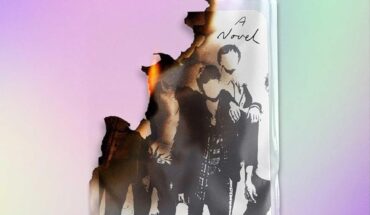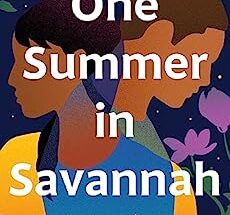 Bangladeshi-Canadian writer Arif Anwar’s splash onto the literary scene has been remarkable. His debut novel, The Storm, has been published in Canada by HarperCollins, in the US by Simon & Schuster, and in India by Aleph. It is also slated to be published in Germany, Italy, and Turkey.
Bangladeshi-Canadian writer Arif Anwar’s splash onto the literary scene has been remarkable. His debut novel, The Storm, has been published in Canada by HarperCollins, in the US by Simon & Schuster, and in India by Aleph. It is also slated to be published in Germany, Italy, and Turkey.
Released in May 2018, the novel immediately earned starred reviews from Booklist, which called it “a remarkable debut,” and Library Journal, saying “this powerful and important debut is a story for our time.” In July, The Storm was featured in the New York Times Book Review, where Chitra Divakaruni called it “a fascinating, ambitious work, stretching across decades and countries and capturing troubled moments in each.”
The novel’s opening is riveting. It’s 1970. A catastrophic cyclone is about to hit the shores of East Pakistan (now Bangladesh); it will wipe out over a half million people. But the journey Anwar takes us on covers almost sixty years and weaves together five interconnected narratives—love stories, really. There’s a young PhD student in post-9/11 Washington, DC, who must leave the US and his nine-year-old daughter when his visa expires; a Japanese pilot and a female British doctor stationed in Burma during World War II; a privileged Muslim couple deciding whether to leave riot-torn Calcutta for safety in East Pakistan (soon to become Bangladesh) before the Partition of 1947; and finally, a poor young family in 1970 that is about to have their lives ripped apart by the fast-approaching cyclone.
The Storm is indeed ambitious, a sprawling, family saga touching on colonialism, religion, migration, class, and ethnicity…and how people of all types react in times of crisis, war and devastating natural disaster.
Dead Darlings is thrilled to bring you this interview with debut author Arif Anwar.
- Your book is full of so much fascinating history. When you’re writing, how do you keep the historical detail from slowing down the plot? What’s the right balance?
That’s the million-dollar question, and I’m not sure I have the answer. Much like how a chef puts salt in food, it’s an instinctual thing, but generally less is more. These days we can look up things in five seconds, so dumping a lot of history on readers is pointless. I’d want to give readers just enough to get them intrigued. If they want to pursue a topic on their own later, all the better.
- I admit, I learned a lot, and looked a few things up myself. During your research, did you learn anything new or surprising about your homeland?
Probably the titular storm: the 1970 Bhola Cyclone. Much of my country’s historical focus is on the Liberation War of 1971, but the catalyst for that was the storm and the West Pakistani government’s response to it. The scale of devastation and loss of human life was unprecedented, and still is, so it’s all the more surprising that we talk so little about it now.
- Let’s talk process. What was the biggest editorial change you made while writing The Storm? What got left out?
Twice during the revisions process I did full rewrites from scratch. The first time, I nixed a couple of characters that were tangential to the plot, expanded the roles of others, and added the interstitial sections with Shar and Anna (the protagonist and his daughter). The second time was after the book was sold, and it was about refining the plot, making the pieces connect better, and overall polish.
- Novel writing is not your first profession. You have an impressive background in international education and public health. What inspired you to write a novel, and how did you learn to write fiction?
I always loved being a reader and it wasn’t until in my early thirties that I thought that writing could be enjoyable in itself. I led a full life before trying the writing thing, and I’m sure my career has found its way into my fiction in subtle ways. I’m grateful for that. I’m not one of those people who knew they were going to be writers since they were kids. Actually, I didn’t even have a single short story published anywhere before The Storm was published.
I learned to write fiction first by reading a lot, of both writers that I admired and those I didn’t, so I’d know what not to do. I thought I knew enough about writing fiction to be dangerous when I first started, but over the last five years I’ve come a long way by just writing a lot. It also helped that I’m part of a fantastic writer’s group in Toronto called First Page, a group of really talented writers so have helped improve my work immensely. And there was of course the invaluable input from my agents and editors.
- Your book includes five stories, several time jumps, and lots of characters. How did you keep track of all the people, places, relationships, and time periods? What was your method?
I’m not too systematic about my writing so there wasn’t any one method. The book was an obsession for five years, so there wasn’t a whole lot competing with it for attention in my head. The story was always playing out there and if anything changed, I was unlikely to forget it. That said, I’d keep track by using the usual tools: notebooks, Evernote, Google Keep, Google Docs, my smartphone, etc. I’d talk things out with my agent and editors too.
- Many of your characters are very different from you. How did you approach writing these people?
By first assuming that it’s okay to write about people who are very different from you. I’d hate to live in a world where we only write about people who are just like us. When writing about people different from oneself, it’s important to approach them with great empathy, respect and understanding based on thorough research from authentic sources. It’s also best to assume that you’ll inevitably get things wrong, and that you will be critiqued for it. That just comes with the territory.
- In some ways, your book is a collection of interconnected migration/immigrant stories. When you started writing, did you know this would be such a timely topic?
That’s a great way to look at it. I obviously didn’t know that this would be a timely topic, although immigration and migration are often at the source of conflicts, they’ve never quite been in the forefront as right now. I think I saw the book more as a collection of people who were looking to “go home”, whether that’s a physical or metaphorical place. And that’s a topic that never grows old.
- To aspiring authors, the story of how a novel gets published never gets old. Tell us a bit about the process of landing your agent and getting your book out in the world.
I sent out my book to agents after the second draft, which was much too early. Consequently, I racked up a ton of rejections. Some of the agents said that they saw potential in the material, but they weren’t willing to take a chance on an unknown writer. I tried to keep my head up throughout the process, working on the manuscript based on the feedback I received from agents and my writers’ group. Ayesha Pande of APL ended up really loving it, and she and Anjali Singh at APL worked on it together with me. We polished the draft for a year (including the full rewrite) before we sent it out fall of 2016, first to Canada, where there was unbelievably an auction between major Canadian publishers for the book. Iris Tupholme at HarperCollins Canada ended up making the winning bid. Then we sold in the US, to Rakesh Satyal at Atria Books (S&S). Since then, we’ve sold the book in Turkey, Germany, Italy and India. Hopefully, there’s more to come, but I already feel very blessed. This all seems like a dream.
About Arif Anwar: Born in Chittagong, just miles from the Bay of Bengal, Arif Anwar now lives in Toronto. He has worked on issues of poverty alleviation for BRAC, one of the world’s largest non-governmental organizations, and on public health for UNICEF Myanmar. He has a PhD in education from the University of Toronto. The Storm is his first novel.




2 comments